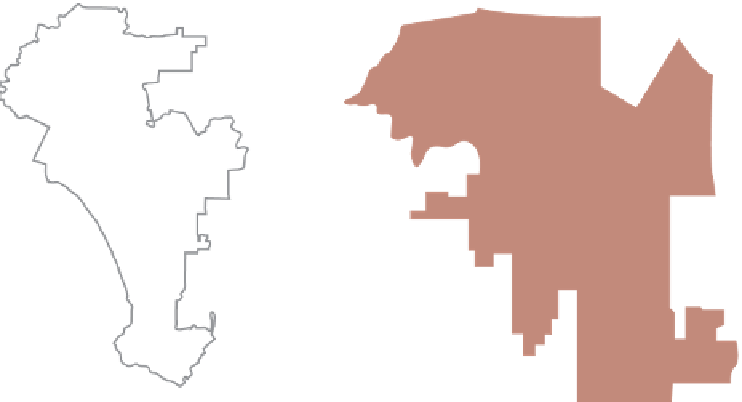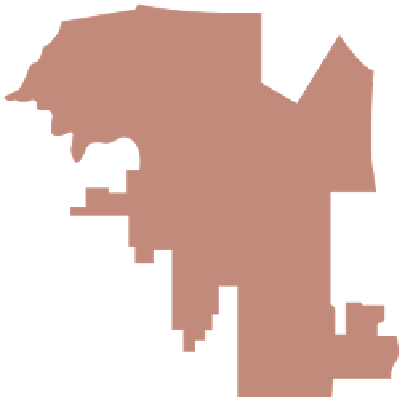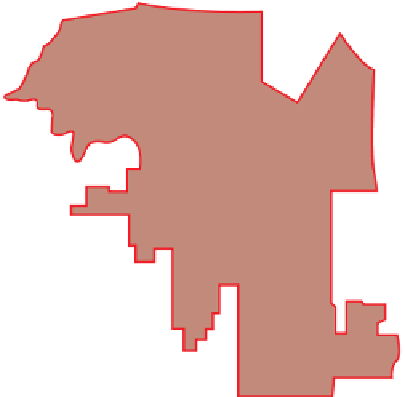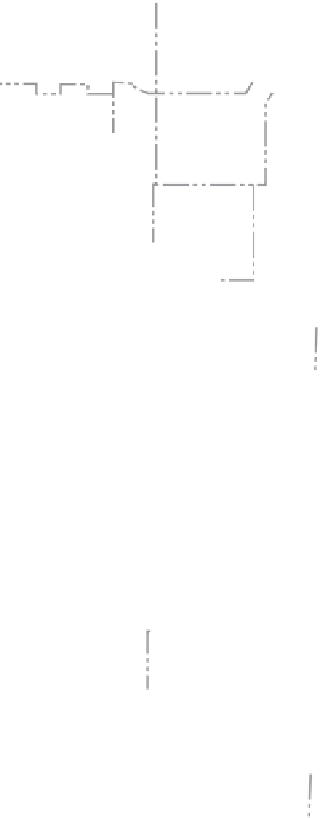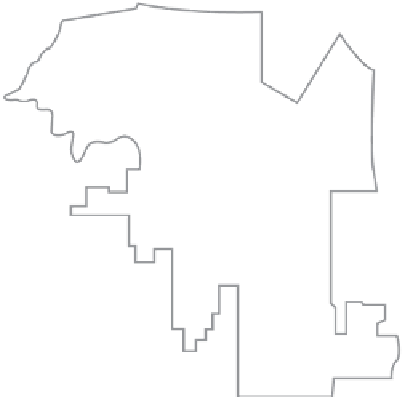Geography Reference
In-Depth Information
with dependable, unionized jobs employing the resident
population. In the 1960s, however, the population of South
Central Los Angeles was working-class African Ameri-
can, and the population of southeastern Los Angeles was
working-class white. After 1970, South Central Los Ange-
les experienced a substantial decrease in the availability of
high-paying, unionized manufacturing jobs when plants
closed and relocated outside of the city and even outside the
country. The people of South Central Los Angeles lost over
70,000 manufacturing jobs between 1978 and 1982 alone!
Geographer James Johnson and his colleagues
explored the impact of economic loss on the ethnic and
social geography of South Central Los Angeles. They
found that the population of the area was over 90 percent
African American in 1970, and by 1990, the population was
evenly split between African Americans and Hispanics. This
change in population composition was accompanied by a
steady infl ux of Korean residents and small-business own-
ers who were trying to fi nd a niche in the rapidly changing
urban area (Fig. 5.19).
San
Fernando
Burbank
Glendale
Pasadena
Beverly
Hills
Koreatown
Culver
City
Santa
Monica
LOS ANGELES
BLACK
COMMUNITY
Ingle-
wood
Hawthorne
Carson
Torrance
Long Beach
1960
Koreatown
1980
1970
Korean
Businesses
Shown as black Dots
Figure 5.19
The Changing Ethnic
Composition of South
Central Los Angeles, 1960-
1980.
Adapted with permission
from
: J. H. Johnson, Jr., C. K.
Jones, W. C. Farrell, Jr., and M.
L. Oliver. “The Los Angeles
Rebellion: A Retrospective in
View,”
Economic Development
Quarterly
, 6, 4 (1992), pp. 356-
372.
THE CHANGING ETHNIC COMPOSITION
OF SOUTH CENTRAL LOS ANGELES
1960-1980
White
Asian
Black
Hispanic
Community Boundary
Mixed


